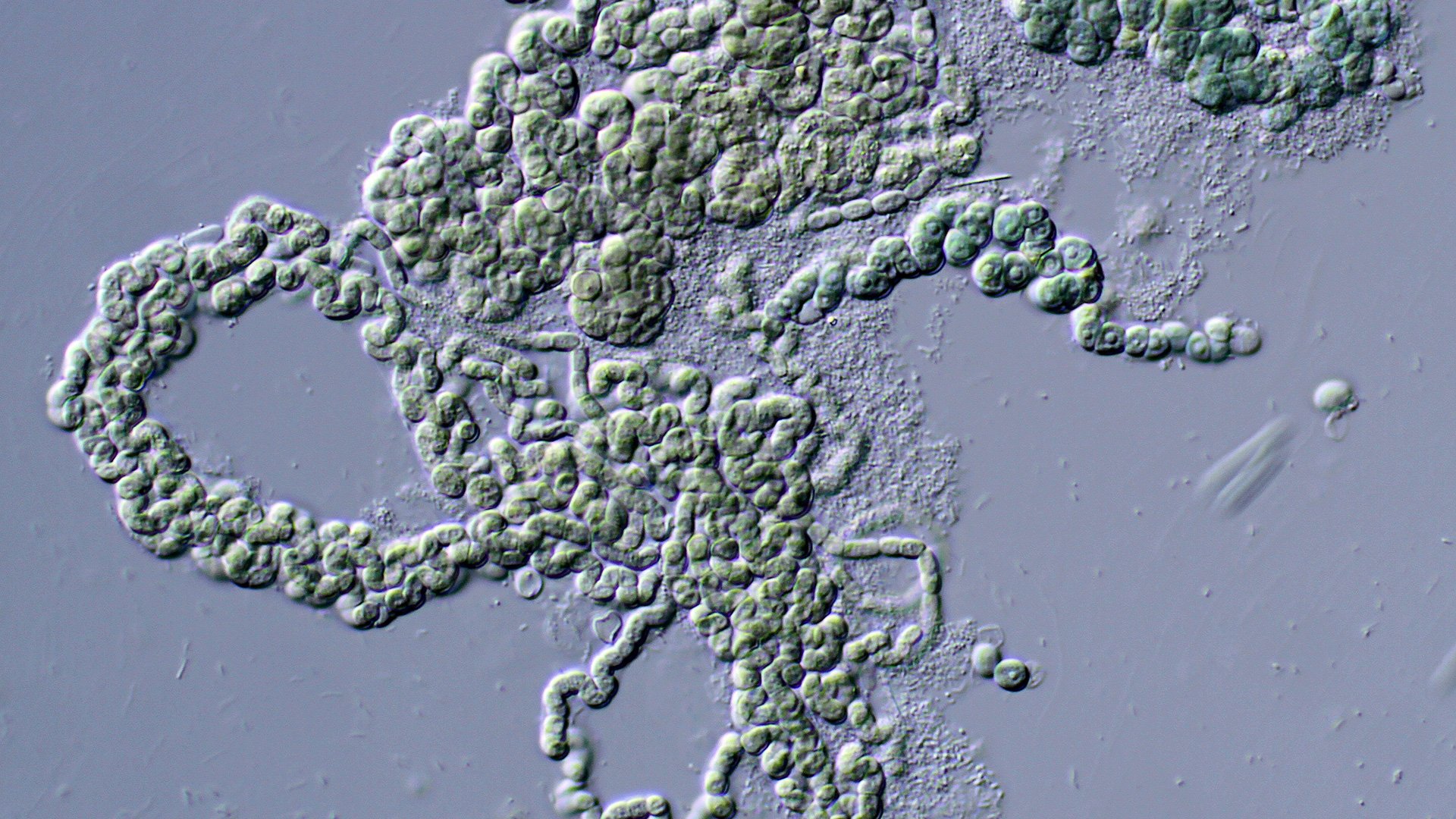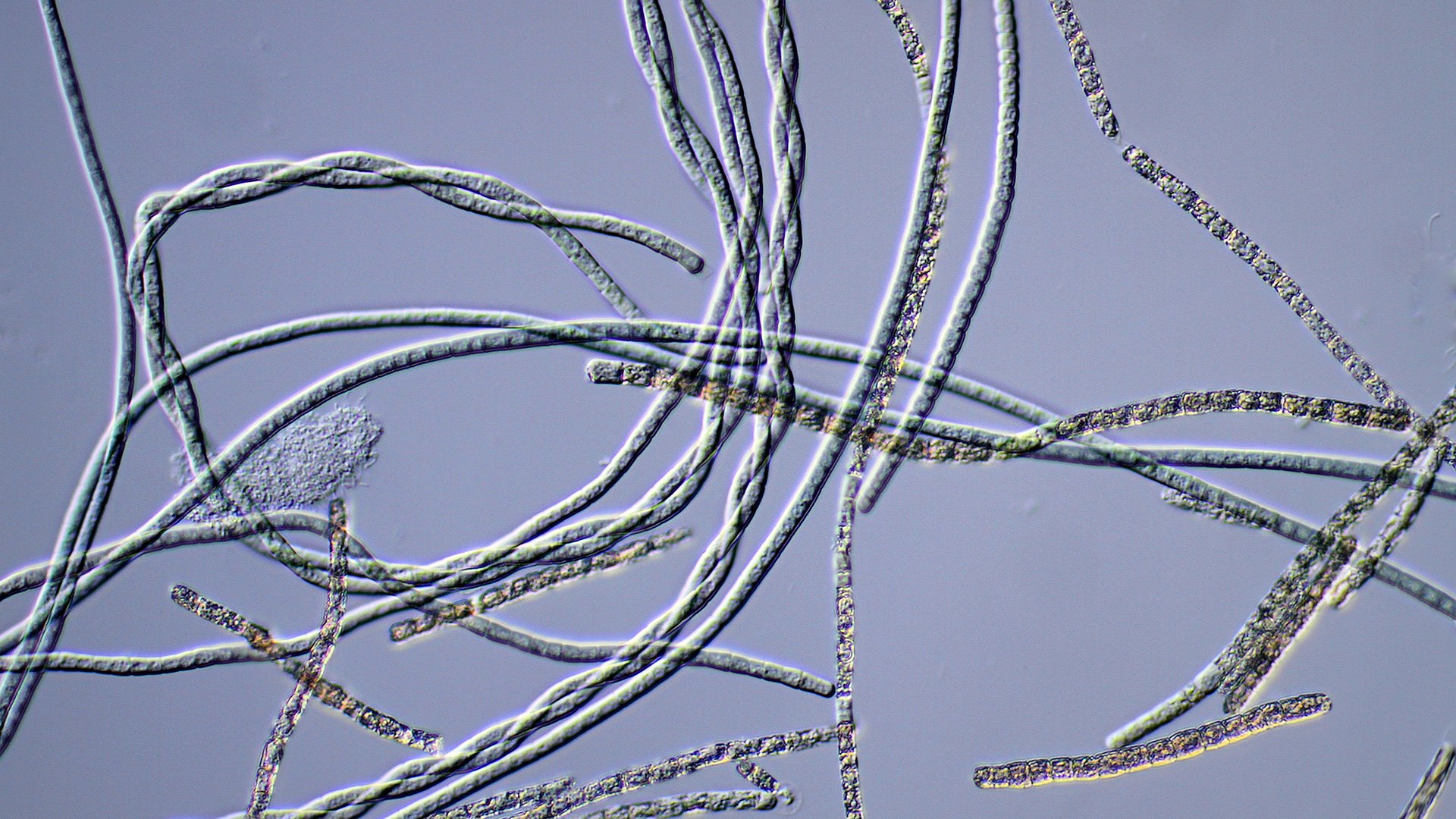Cyanobacteria
My name is Tim, one of the younger guys who you will see at the lab. Since February of this year I have been working at the Micropia lab every Sunday morning. Originally, I was studying psychobiology, but this year I am busy making the move to the study of regular biology. Though I am very interested in the cognitive functioning of humans, I realised that I really wanted to immerse myself in the various aspects of biology. My voluntary work at the Micropia lab is a good fit for this. I spend a great deal of my Sunday mornings studying Calothrix and Nostoc, two types of cyanobacteria. Cyanobacteria form a large part of the phytoplankton in the oceans. We are now investigating the best way to cultivate them in the lab.

Nostoc
More than 50%
Cyanobacteria are very special single cell organisms, because they are capable of photosynthesis. Just like plants, they can use light to produce sugar from water and carbon dioxide. More than 50% of all oxygen on earth is produced in this way by microscopically small phytoplankton, which include these bacteria. Sounds crazy, doesn’t it? At school, we are only taught about trees and plants being ‘oxygen producers’, but they only account for half of all oxygen production.
Algal bloom
Cyanobacteria always live in water and in the summer their number can simply explode. This sudden growth in algae can result in the emission of certain types of toxic substances that can cause skin irritation. In such cases, we are warned not to swim in affected waters. This algal bloom is very common in the spring and summer and is caused by the combination of more sunlight, a warmer environment and an abundance of nutrients. The cyanobacteria are then able to multiple very rapidly.
Nitrogen
But Calothrix and Nostoc are even more special. They are capable of forming long strands and these in turn can create very attractive shapes. They are also able to absorb nitrogen from their environment. Nitrogen is a vital element for life on Earth. But despite a large percentage of air consisting of gaseous nitrogen, plants and animals cannot absorb it. Calothrix and Nostoc are able to do this, however, and we therefore call them nitrogen-fixing organisms. They use the nitrogen for all kinds of processes in their cell. Because they are eaten by zooplankton and other micro-animals, the nitrogen they contain eventually ends up in plants and animals, too.

Calothrix
Would you like to be a volunteer at Micropia?
From the moment they arrived, Tim has taken care of these organisms and also ensured they are stored properly. He has also dealt with medium preparation and the protocols that are involved in the project. This is quite a responsibility! Would you like to help out in the Micropia lab? We are looking for volunteers who, like Tim, want to help out with the daily activities in the lab and may also want to start their own project.
